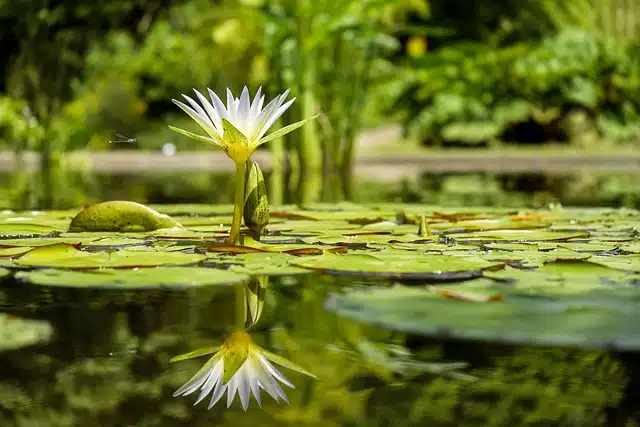
The origin of natural ponds is usually rain.
A pond is a small body of water that can arise naturally or be developed by humans . In the first case, water accumulates in a depression in a piece of land without human intervention, while artificial ponds are created by people for practical or ornamental purposes.
Natural ponds
Natural ponds are usually formed with rainwater . When rainfall accumulates in a depressed area, the water is stored and thus the pond appears, which resembles a lagoon or a lake although its surface is more limited.
Precisely, the size of natural ponds is not their strong point. In fact, neither is its depth, which usually does not exceed four meters, something that can be considerably affected in times of drought .
Despite these characteristics of natural ponds, which can reveal a strong dependence on meteorological conditions for the presence of water, it is common for different species of flora and fauna to live there. Fish, insects, birds and amphibian animals can coexist in the ecosystem formed by the pond.
If the depth of the pond is considerable and it is not exposed to the wind, then we can notice the stratification process , which takes place once a year and also occurs in some lakes. This gives rise to three well-differentiated layers: the epilimnion , the metalimnion and the hypolimnion , each one deeper and with a lower temperature than the previous one.
Fauna of natural ponds
Regarding mammals, there are not many species that we can find in natural ponds. Among them is the arvicola , a genus of rodent that is also known by the name of water rat and that bases its diet on vegetables. Another common pond mammal is the shrew , which stands out for its swimming prowess and can hunt everything from insects to other animals that are considerably larger than it.
Of birds we can find a greater number of species: some examples are moorhens, herons, migratory ducks and coots. These animals take advantage of natural ponds to take a break in the middle of their long migrations . There are also amphibians and reptiles, among which toads and frogs stand out. Aquatic snakes, for their part, base their diet on small fish, insects and frogs, although they do not attack humans.
Finally, we must not forget about fish, although we have already mentioned them as a source of sustenance for other species. In this case, tench and carp stand out, but there are others that have certain specific conditions to pass through natural ponds. Eels and pike, for example, require communication with a river; salmon and trout, in addition, it is fast and is located in a mountain area.

Frogs are some of the typical pond animals.
Artificial ponds
As for artificial ponds , they are often used as decoration with the aim of beautifying a place or a landscape . Even in these cases, fish can be raised, with the aforementioned tench and koi being highly chosen species thanks to their adaptation to stagnant water.
Man -made ponds, on the other hand, can be used to raise fish for economic purposes . Trout production, for example, takes place in ponds.
Another possibility that ponds offer is to collect water for irrigation . Thus it is possible to use them when carrying out agricultural activities or tasks related to gardening.
